So perhaps you’ve recently noticed water leaking out of your pool pump and are not sure why it happened or if there’s anything to do to fix the problem. In this article, I’ll explain why you may have a leaky pump, their solutions, and if you’ll eventually have to replace your pump.
A leaky pool pump can result from issues at the suction side, the pressure side, or the shaft seal. For example, you may have a broken pump lid, in which case you’ll have to either fix the crack or replace it. A damaged impeller, where you’ll have to either unblock or replace it.
Before we tackle the issues in detail, let’s first take a look at all the places and occasions where you may find a leak, so that you can narrow down the source as much as possible.
Article Contents
Common Places and Scenarios Where Pump Leaks Occur
Here are some of the most common places and scenarios where you may find a leak. Be sure to look at these areas carefully to make sure you can narrow down the cause of the issue.
- The pump lid
- The pump housing
- The bottom of the pump
- The top of the pump
- When running the pump
- When the pump is off
- From the pump shaft
- From the impeller
- After replacing the shaft seal
- From any pipes, lines, connections, and joins
- Pump leaking from backwash
- The pump gasket
- The pump strainer basket
- Drain plug at bottom of the pump
As you can see, pool pumps can leak from a lot of places!
How Does a Pool Pump Work?
A pool pump’s function is to suck water in from one end (the inlet) and push it out the other (the outlet). It pushes the water out to the filtration system so that the water can be cleaned when it returns to the pool. Think of it as the heart of the pool.
When water first enters the pump, it gets sucked from the pool through the skimmer basket, which removes large debris such as leaves and grass. The motor turns the impeller, which creates a vacuum that sucks water through the pump (from the pool) and back out and into the filtration system. It’s then returned to the pool through the return jets (eyeballs).
Is it Normal for a Pool Pump to Leak Water?
A pool pump should not be leaking water. Having a leaky pool pump can be dangerous, noisy, and expensive to fix. Leaks can increase your water bill due to the excess water required to keep your pool running, and can damage the motor if the leaks are in the general vicinity.
And so, it’s important to always double-check your pump if you suspect there’s a leak, and if that’s the case, have the leak(s) repaired as soon as possible.
Related Reading: 6 Reasons Why Your Pool Pump is Surging or Pulsing (And Fixes)
Troubleshooting and Fixing a Leaking Pool Pump
Leaks can occur at a variety of places in a pool pump. The actions you’ll need to take to fix the issue will depend heavily on where the leak is occurring. In this section, we’ll be going over in detail:
- Areas where you might find a pump leak
- Why do pool pumps leak
- How to test and find a leak in a pool pump
- How to fix a leaking pool pump
The first thing you want to do is shut down the pump and dry off the area around the pump. Then switch the pump back on and try to narrow down where the leak is coming from. It’s not always easy though.
Related Reading: 20 Reasons Why Pool Pumps Lose Pressure (and what to do)
Two Types of Leaks: Suction and Pressure Side Pump Leaks
Suction Side Pump Leaks
There are two sides to a pool pump. One side involves the suction side and the other the pressure side.
The suction side is the pump’s intake. It’s the side where the water from the pool is sucked in.
Suction side leaks result in air getting into the system. If you have your pump running and notice air or air bubbles in the pump strainer or coming out of the jets, it means an air leak.
You may not notice your pump is leaking when the pump is running. The water is running so fast that it won’t escape. When the pump is off, you may however notice the water start to seep out of the leak source.
Pressure Side Pump Leaks
The pressure side is the pump’s outlet. Or where the water exits the pump and heads to the filter and back to the pool.
While the suction side leaks leak air into the system, pressure side leaks involve water coming out of the pump. The strong pressure created by the impeller will push water out of any place downstream of the pump strainer that has a leak. Therefore, you can check to see if you’re dealing with a leak on the pressure side if you’re noticing:
- Dripping from the discharge pipe
- A pool of water under or near the pump
- The pool loses water but it’s not due to evaporation
If you’ve confirmed that one or more of these issues are occurring, it’s time to check these possible areas on the pressure side to confirm what exactly is causing the leak(s).
Where Pool Pumps Leak
1. Pump Lid
The pump lid is the first place you will want to check. It’s important to check this first because it’s the easiest component to notice a leak and the first you’ll probably encounter. You don’t have to look deep into the pump to notice an issue.
Pump lids can deform or crack. Check carefully. Even the smallest crack is enough to cause a leak. If the issue happens to be a cracked lid or deformed lid, replace the lid.
It might be as simple as the lid not being done up tight enough. Just tighten it up.
2. Pump Lid O-ring
If it’s not the lid, the next thing you’ll want to check is the rubber O-ring beneath the lid. The O-ring is used to keep the lid tightly sealed over the pump. Having cracks on the ring will make the cover fragile and allow water to leak.
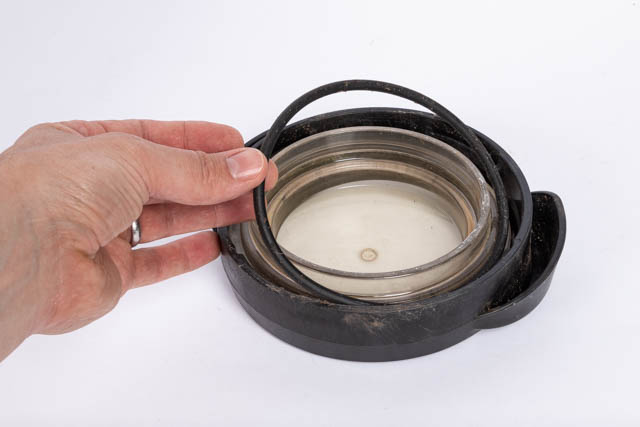
If the O-ring is cracked or deformed, you’ll have to replace it. Otherwise, you may be able to just lubricate the lid with some type of Teflon-based pool lubricate (don’t use Vaseline) to make sure the lid seals tightly.
If you have trouble undoing the pump lid, we have an article on stuck pump lids here.
3. Pipes, Joins, and Unions
Pump pipes, glued joins, and unions can all be prone to cracking. The most common place for a pipe to leak is at the joins and unions.
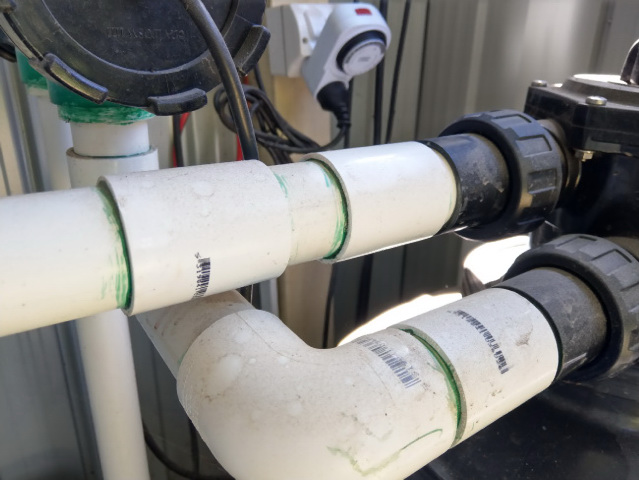
For pipes, you can identify cracks by making up a mixture of dish soap to create lots of bubbles. Put the bubbles on the joins and the suspected leak place. If the bubbles get sucked into the pipe, you’ve found your leak.
For joins and unions, you can test for leaks the same way you tested for pipes.
To fix unions, you can try replacing or lubricating the O-ring, which you can identify by twisting the union off. Afterward, use a like-for-like seal to replace the O-ring. And make sure they are tight too.
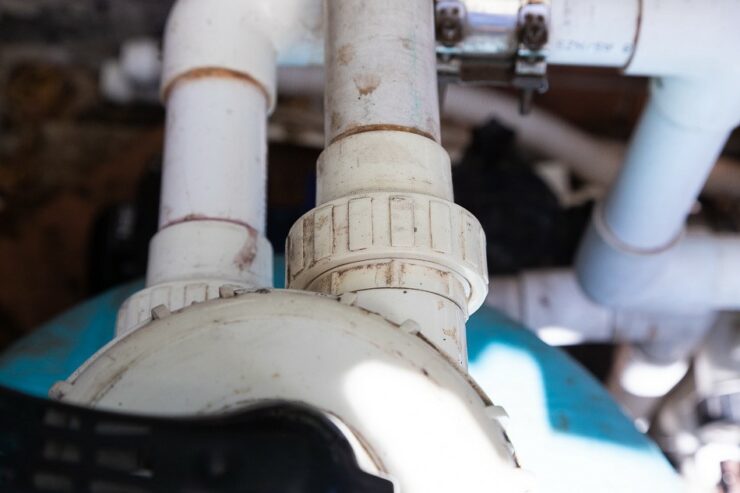
For leaks at glued joins, you may be able to seal up the join with epoxy, a rubber sleeve, or fiberglass wrap.
4. Valves
It’s common for the valves around the pump to leak water too.
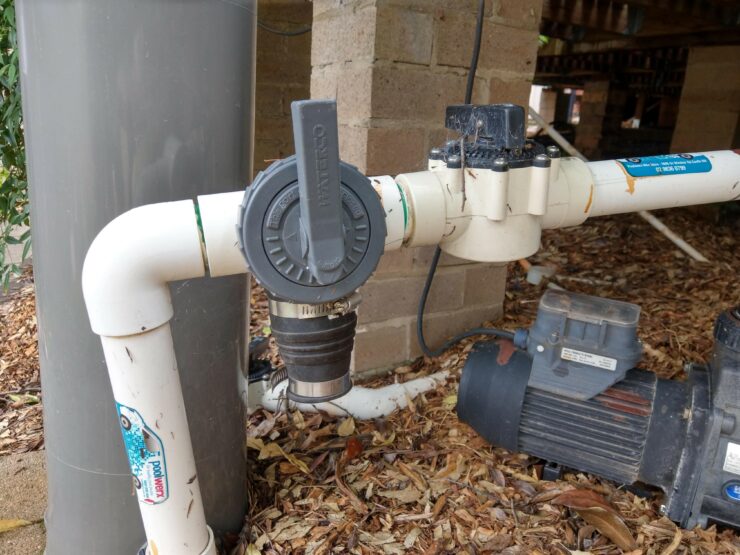
Valves function similarly to the pipes and can you identify the issue the same way you did with the pipes, joins, and unions? Simply pour water over them and watch for bubbles. Any bubbles present will mean you’ll have to replace the damaged valve.
5. Pump Drain Plug
Another component worth checking is the pump drain plug. This is located at the bottom of the pump on the strainer side.
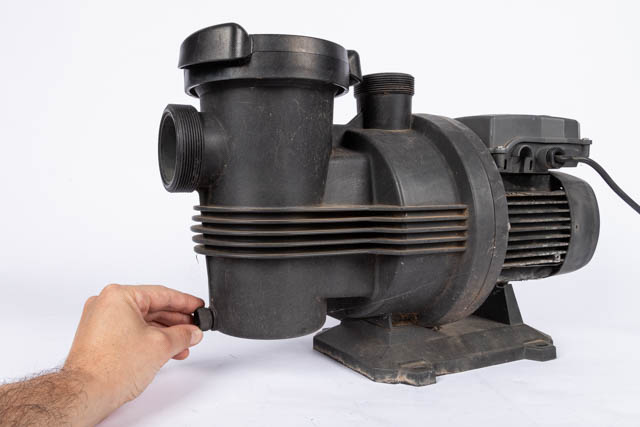
If the O-ring on the drain plug is cracked or misaligned, air can enter the system and cause leaks. The most secure way of fixing this is to replace the drain plug O-ring.
6. Pump Intake Fitting
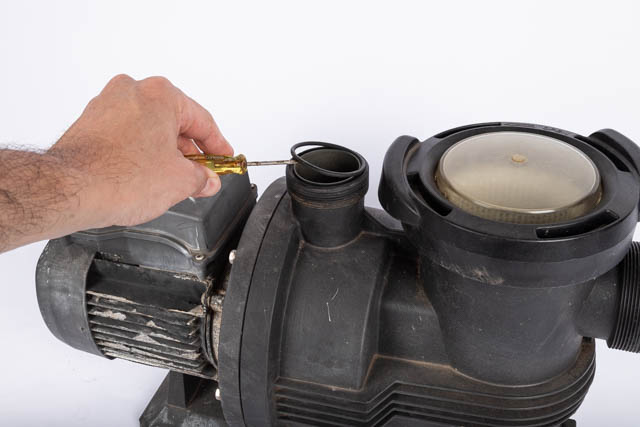
The pump intake is where the pipes join with the pump, so any damage to this can result in leaks. If it’s not glued in, first check the fitting is tight. If it is tight and still leaks, undo the fitting and check the o-rings are in good condition. Replace them if they are old or cracked.
7. Impeller
The impeller is the spinning part inside the pump. It creates water pressure so that a vacuum is formed to force water through the pressure side. Debris can sometimes enter the impeller and damage it, the pump can leak water. Also, impellers have a limited lifespan, so even without debris, impellers can break down over time and create a leak.
You’ll have to remove the impeller and see if it’s either damaged, worn, or blocked.
You should be able to remove a blockage just by opening the pump lid and feeling inside. Make sure the power is off at the breaker though.
To check a broken impeller, you’ll need to take the motor off of the pump. If the impeller is damaged, it needs to be replaced.
8. Pump Housing Seal
Besides the seal on the pump motor lid, there’s another seal located between the pump housing and motor, which can just as easily wear down or crack and cause a water leak. You’ll need to remove the motor to get to this seal.
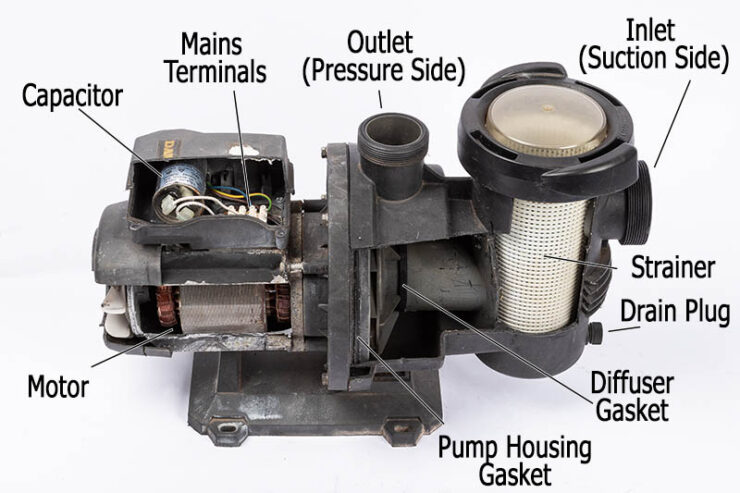
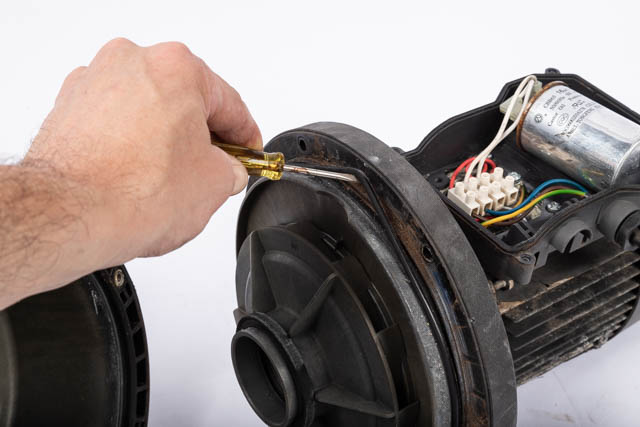
Check it for cracks and damage. You’ll have to replace the seal if it is damaged.
9. Pump Discharge (Outlet) Pipe
The next step is to look at the discharge pipe (outlet of the pump). If the discharge pipe is ill-fitting or has come off of the pump, it will cause a leaking pump. This can be due to either a problem with the seal, improper installation, or a shrinking PVC pipe.
To fix this issue, you’ll have to remove the pipe and fit both the suction and discharge ends of the pipe with Schedule 80 nipples. This will allow the pipe to be more rigid and less vulnerable to heat.
Note: Schedule 80 PVC pipe has slightly thicker walls and is better than schedule 40 pipe for high-pressure applications.
10. Pump Housing
If everything around the pump and the pipes leading out of the pump are in good condition, it’s time to take a look at the pump itself. Although not common, the pump housing itself can crack. This can happen if the pump has been subjected to freezing temperatures with water still in it. Also, over time, pump housings can crack from heat and age.
You can check to see if the pump is the cause of the leak(s) by shining a flashlight on the pump housing and looking for any cracking.
Cracks in the pump housing can be difficult to patch up. It may be possible with epoxy but due to the plastic surface and the pressure that’s going through the pump, it may not hold. In this case, your best bet would be to replace the pump housing with a new one.
11. Pump Shaft Seal
If you notice a puddle of water under your pump and it’s not coming from the top of the pump, it’s likely that the pump shaft seal needs replacing.
This particular seal is between the pump motor and the impeller and is used to keep water from entering the motor. Therefore, if this seal is damaged, water can leak into the motor, which can become a serious issue.
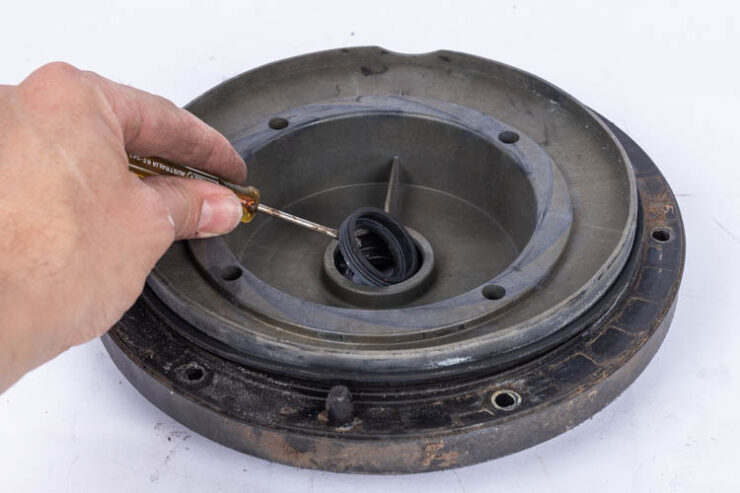
Is it Better to Replace the Pump?
Most issues with the pool pump don’t require getting a new pump. It really depends on the problem and the cost of replacement.
Pumps cost between $300 and, at the high-end, upwards of $2000. Certainly for expensive pumps, it may be more worthwhile to fix the pump. Just about everything we’ve discussed in this article doesn’t cost hundreds of dollars by itself.
You should also consider the time for which you’ve had your pool pump. Most pool pumps last between 8 to 12 years before needing replacement. Therefore, if you’ve only had your pump for a few years, there’s no reason why you should spend another lot of money to replace it, especially if the issues can be solved with a much cheaper alternative.
Related Reading: Can I Replace 1 HP Pool Pump With 1.5 HP?
Final Thoughts
There can be many reasons why pool pumps are leaking, however, most can be solved in a rather simple manner. Hopefully, you’re able to find the cause of your leak through our guide and in turn, potentially save hundreds of dollars by buying a new pump.
Related Reading:
How Do You Know If Pool Pump Shaft Seal Is Bad?
Pool Pump Impeller Stuck on The Shaft: How to Remove


My pool pump has sprung 2 tiny pinholes in the side of the housing itself. I read your suggestion about the epoxy, so I’m going to try that first. Something tells me with the amount of pressure coming through the unit that this will probably be a temporary fix, but I only try… Thanks so much for your detailed recommendations and trouble-shooting tips. Very informative.